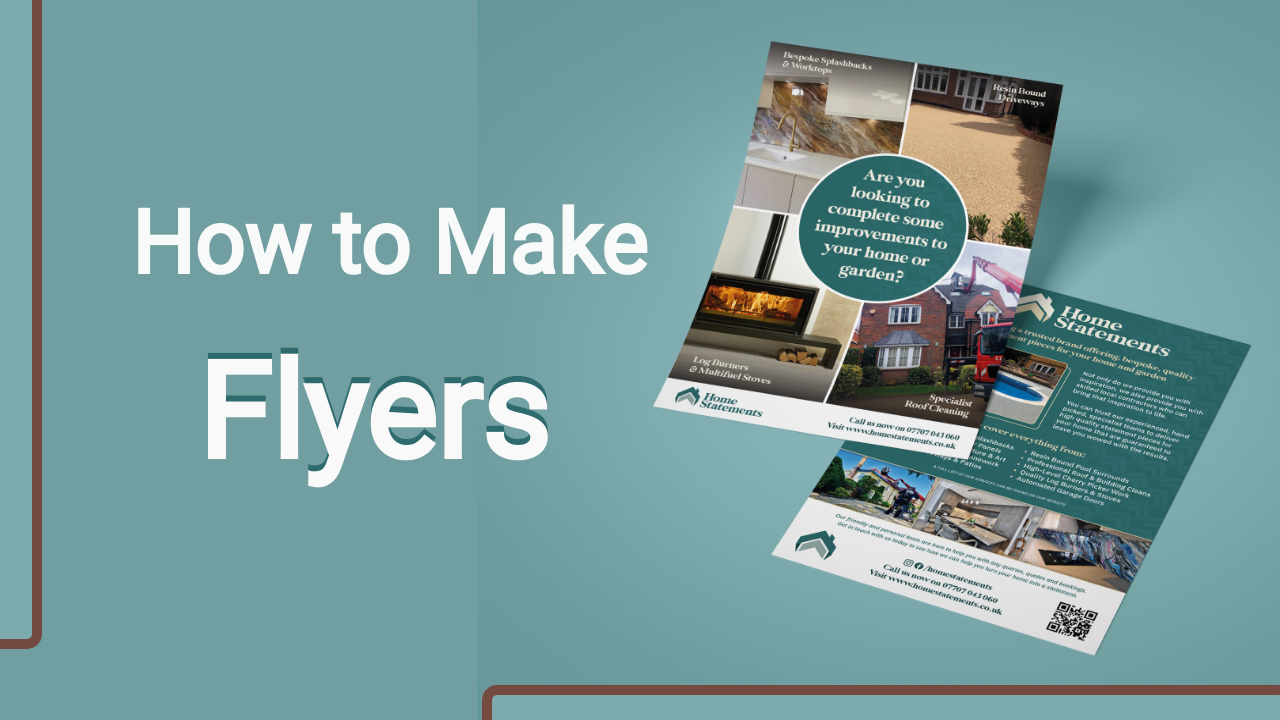In today’s competitive digital landscape, crafting flyers that truly stand out is crucial for effective marketing. Whether you’re promoting an event, a business, or a cause, a well-designed flyer can make a lasting impression. Our comprehensive step-by-step guide will take you through the process of creating flyers that not only catch the eye but also leave a lasting impact on your target audience.
Additionally, exploring the features of a free flyer creator can be a valuable resource, offering accessible tools and templates to enhance your design process without breaking the budget.
Understanding Your Audience
Before diving into the design process, it’s essential to understand your target audience. Conduct thorough market research to identify the preferences and interests of your demographic. Knowing your audience will enable you to tailor your flyer content to resonate with them, increasing the likelihood of engagement.
Crafting Compelling Content
1. Captivating Headline
Start your flyer with a captivating headline that grabs attention. Use clear and concise language to convey the primary message. Consider using action verbs or posing a question to engage the reader immediately.
2. Engaging Visuals
Humans are visual beings, and incorporating eye-catching visuals is paramount. Invest in high-quality images or graphics that align with your message and brand. Ensure the visuals are relevant, vibrant, and evoke the emotions you want to convey.
3. Clear and Concise Message
Avoid overwhelming your audience with information. Keep your message clear, concise, and focused. Use bullet points or short paragraphs to break down information, making it easily digestible for the reader.
Designing an Eye-Catching Layout
4. Strategic Use of Colors
Select a color scheme that aligns with your brand and creates a visually appealing contrast. Consider the psychology of colors—for example, red for urgency, blue for trust, or green for a sense of nature.
5. Typography Matters
Choose fonts wisely. Opt for legible fonts that match your brand identity. Experiment with font sizes to emphasize key points, ensuring readability across various devices.
6. Balanced Composition
Maintain a balanced layout to guide the reader’s eyes smoothly. Use a grid system to organize elements, creating a sense of order and professionalism.
Incorporating Branding Elements
7. Logo Placement
Integrate your logo strategically into the design. Ensure it complements the overall layout without overshadowing the main message. Consistent branding builds trust and recognition.
8. Branded Call-to-Action
Craft a compelling call-to-action (CTA) that aligns with your brand voice. Whether it’s directing readers to a website, a social media page, or an event, make the CTA prominent and actionable.
Choosing the Right Size and Format
Choosing the right flyer size and format is a crucial step in ensuring your promotional material makes a lasting impact. The size of your flyer should align with the nature of your content and the context of its distribution. A well-chosen size not only enhances visibility but also contributes to the overall aesthetics of your design. Similarly, selecting the appropriate format is essential for conveying your message effectively.
Consider the type of information you want to present and the platform where the flyer will be distributed. Whether it’s a standard letter size for versatile distribution or a larger format for eye-catching displays, making the right choice sets the foundation for a successful and visually appealing flyer.
Printing and Distribution
High-Quality Printing
Invest in professional printing services to ensure the final product reflects the quality of your brand. Consider factors like paper quality, finish, and size to enhance the tactile experience for the audience.
Strategic Distribution
Identify key locations or channels for effective distribution. Leverage both online and offline channels to maximize reach. Consider partnerships with local businesses or community centers to expand your flyer’s visibility.
Measuring Success and Iterating
Trackable Metrics
After distribution, use trackable metrics to measure the success of your flyer campaign. Monitor website visits, social media engagement, or event attendance to gauge effectiveness.
Feedback and Iteration
Seek feedback from your audience to understand what worked well and what could be improved. Use this valuable information to iterate and refine your flyer strategy for future campaigns.
Recommended read: Expressing Well-Wishes Through Group Cards
Conclusion
In conclusion, creating impressive flyers requires a strategic blend of understanding your audience, compelling content, eye-catching design, and effective distribution. By following these steps, you can elevate your flyer game and leave a lasting impression on your target audience. Additionally, staying updated on the latest trends in flyer designs can further enhance the visual appeal and effectiveness of your promotional materials.
Also, read our blog on “Things you Should Never write in your Cards“.
FAQs (Frequently Asked Questions)
How can I ensure my flyer design is unique?
Crafting a unique flyer involves a combination of original content, creative design elements, and a deep understanding of your audience. Incorporate distinctive visuals and messaging that set your flyer apart.
What role does color play in flyer design?
Colors evoke emotions and convey messages. Choose a color palette that aligns with your brand or event and elicits the desired emotional response from your audience.
Is there an ideal flyer size for all purposes?
The ideal flyer size depends on the content and distribution context. Consider the message and where your target audience is most likely to encounter the flyer.
How can I make my CTA more effective?
Place your call-to-action (CTA) prominently and use compelling language. Clearly state the next steps you want your audience to take, whether it’s visiting a website, making a call, or attending an event.
What should I prioritize in flyer content?
Prioritize concise and engaging content that directly addresses the needs and interests of your audience. Clearly communicate the value proposition and key information.
How can I gather feedback on my flyers?
Seek feedback from your target audience, colleagues, or friends. Use surveys or informal conversations to understand their impressions and make informed improvements.
